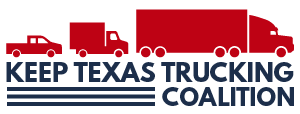
This graph depicts 281 verdicts in state or federal courts from a database of motor vehicle accidents involving a corporate or trucking company defendant from 2010 through Nov. 8, 2019, in Georgia, Florida, Texas, North Carolina, South Carolina, Tennessee and Alabama. The data is provided by CaseMetrix LLC of Atlanta, which provides plaintiff and defense attorneys as well as corporations with information on verdicts and settlements.
“People focus on nine-figure verdicts, but if you compare the first five years to the second five years with 2015 to 2019, there are five times as many verdicts that are $20 million-plus in the last five years compared to the prior five years (2010-2014),” said CEO Alan Pershing.
“Everyone is talking about it and this makes it very real, to be able to see the numbers which are pretty dramatic. The last few years they have really shot up,” he said.
No explanation for the big jump
Pershing said his firm, which was established in 2009, has not changed forms or methodology in the last decade. The company’s total database is composed of 5.42% verdicts and 94.58% settlements. The ratio of verdicts to settlements has remained about the same from the start, with very little variability from year to year, he said.
Pershing has no explanation for the big jump since 2016, but he believes big verdicts may be a self-perpetuating phenomenon, with plaintiff attorneys asking for more because they reference recent verdicts.
Many members of the defense bar, however, attribute the rise in so-called nuclear verdicts in recent years to trial tactics by plaintiff attorneys aimed a making juries feel threatened or encouraging them to use verdicts to send broader messages. Another plaintiff strategy is called “anchoring,” based on the idea that juries tend to “anchor” their awards around suggested numbers. Other attorneys suggest that litigation financing, a relatively new phenomenon, may be making it easier for some plaintiffs to engage in protracted litigation, whereas previously they may have succumbed to pressure from big companies to settle.
But the sharp uptick suggests an avenue for further inquiry.
